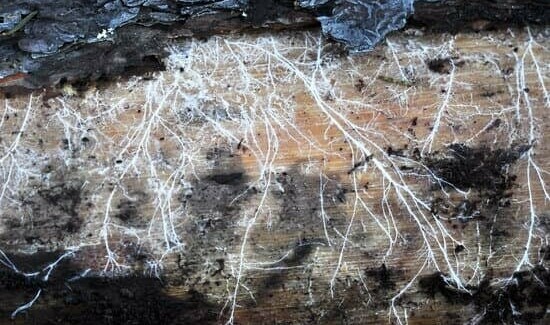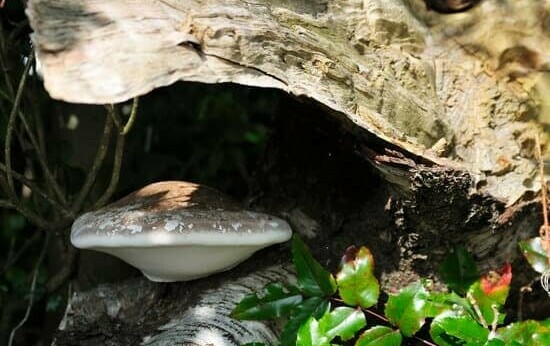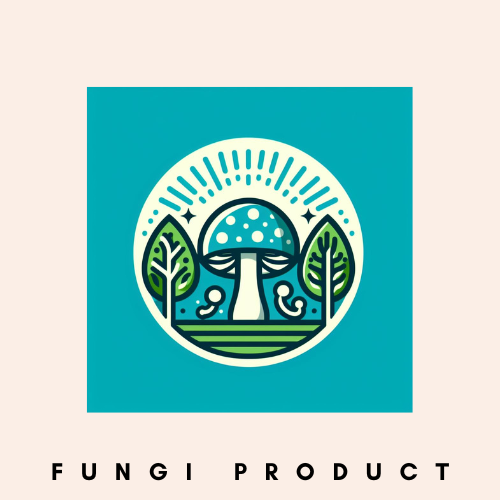I’m sure I’ve caught your attention with the promise of a material revolution.
Indeed, mycelium is at the forefront of a shift towards sustainable living, yet its capabilities remain cloaked in obscurity for many. I’d argue it’s high time I shed light on this remarkable organism and its potential to redefine our approach to the environment.
First up, let me clarify that mycelium isn’t a flash-in-the-pan trend. It’s the very root system of fungi, and it’s been improving soil health and supporting ecosystems long before it became a buzzword for sustainability. People often overlook this unassuming network of threads because what’s underground isn’t always appreciated at first glance.
Despite its low profile, mycelium is no underdog. It’s remarkably durable, lightweight, and capable of growing in an array of conditions, making it a versatile material for a host of green applications. Precisely speaking, this biological wonder is breaking barriers in sectors from construction to fashion, transforming how we view materials in a world urgently calling for sustainable practices.
But this is only a snapshot of mycelium’s magic. In the upcoming sections, I’ll peel back the layers of how mycelium looks, feels, operates, and the pioneering countries shaping its journey.
If you’ve ever wondered about sustainable alternatives that can go toe-to-toe with your everyday synthetic materials, stay tuned. Mycelium holds secrets that I’m excited to reveal.

Mycelium Demystified: Texture, Production, and Leading Nations
When I mention mycelium, you might picture a typical mushroom cap and stem. However, the true hero is often hidden beneath the soil. Mycelium is the fibrous network that forms the bulk of a fungus’s structure. Imagine it as a vast web, neither solid nor liquid, but rather like a dense mat of hyphae, which are thread-like cells. It’s this part of the fungus that has sparked a revolution in sustainable materials.
As for how mycelium products come into being, it’s a delicate dance between nature and technology. Manufacturers encourage mycelium growth by feeding it agricultural waste, letting the fibers weave themselves into a cohesive mass. Then they halt the growth, usually by drying, resulting in a sturdy, lightweight material. It’s a low-energy and low-waste production process, aligning perfectly with green principles.
So, which countries are leading the charge in mycelium production? The United States and the Netherlands are pioneering this space. The U.S., with companies like Ecovative, has made significant strides in developing mycelium-based materials, while the Dutch start-up, Mogu, is known for its mycelium-based products that range from home interiors to acoustics solutions.
Mycelium’s Rise in Various Industries: An Eco-friendly Takeover
It’s starting to become clear that mycelium isn’t just a scientific curiosity, it’s a material that industries across the board are beginning to take seriously. Mycelium products are captivating the attention of sectors ranging from fashion to auto manufacturing due to their remarkable properties. One of the most compelling attributes of mycelium is its sustainability, and as such, industries with a notorious history of environmental impact are showing a growing interest in these products.
Look at the fashion industry, for example, renowned for its high environmental footprint. Designers and brands are now experimenting with mycelium-based leather alternatives that promise a greener closet without compromising on style or quality. In automotive manufacturing, mycelium offers the potential for lightweight, biodegradable components, promising a reduction in the industry’s carbon emissions.
From packaging that decomposes naturally rather than languishing in landfills, to furniture that offers an end-of-life solution that isn’t ecologically costly, businesses are finding that mycelium aligns perfectly with consumer demand for sustainable products. Moreover, the construction industry is exploring mycelium for insulation and acoustic panels driven by the material’s natural fire retardant and insulation properties.
Geographically, mycelium’s influence is spreading far and wide. In Europe, biotechnology firms are harnessing mycelium to create extremely efficient and sustainable materials.
In the United States, there are several initiatives underway to promote the use of mycelium as
an eco-friendly material in various applications:
- Research and Development: Universities and research institutions across the country are conducting studies to explore the properties of mycelium and its potential applications. This includes research into its use in construction, packaging, insulation, and more.
- Startups and Companies: There are startups and companies dedicated to producing mycelium-based products or incorporating mycelium into existing products. These companies often focus on sustainable practices and reducing environmental impact.
- Government Grants and Funding: Some government agencies provide grants and funding opportunities for research and development projects related to sustainable materials like mycelium. These initiatives aim to support innovation and drive adoption of eco-friendly materials in various industries.
- Educational Programs: Universities and organizations offer educational programs and workshops to raise awareness about mycelium and train individuals in its production and application. These programs help to build expertise and capacity in the field.
- Collaborations and Partnerships: Collaboration between different stakeholders, including academia, industry, and government, plays a crucial role in advancing the use of mycelium. Partnerships facilitate knowledge sharing, resource pooling, and collective action towards common goals.
To make it very clear that the eveolution is indeed no science fiction anymore I like to give
a few examples of products and projects in the USA that utilize fungi as a raw material:
- Mushroom Packaging by Ecovative Design: Ecovative Design is a company that produces sustainable packaging materials using mycelium. Their Mushroom Packaging is made from agricultural waste and mycelium, providing a biodegradable and compostable alternative to traditional packaging materials like styrofoam.
- Mycotecture by The Living: The Living, an architecture firm based in New York City, explores the potential of mycelium in architecture through their project called Mycotecture. They investigate how mycelium can be used to grow building materials such as bricks and insulation panels, offering environmentally friendly alternatives to conventional construction materials.
- Mycelium Leather by MycoWorks: MycoWorks is a company that produces a leather alternative called Mycelium Leather, which is made from mycelium fibers. This material mimics the properties of animal leather but is cruelty-free and environmentally sustainable, offering a sustainable option for the fashion and textile industries.
- Mycelium Insulation by Off Grid Insulation: Off Grid Insulation produces insulation materials using mycelium as a binder. These insulation panels are made from renewable and biodegradable materials, providing an eco-friendly alternative to conventional insulation products.
- Fungi Mutarium by Livin Studio: Fungi Mutarium is a project by Livin Studio that explores the use of fungi to decompose plastic waste and produce edible mushrooms. The project aims to address plastic pollution by transforming plastic into nutritious food through the action of fungi.
These examples showcase the diverse applications of fungi as a raw material in various industries, from packaging and construction to fashion and waste management.
In Europe, there are also numerous initiatives and projects leveraging fungi as a raw material
for various applications. Here are a few examples:
- Fungus Chair by Grown.bio: Grown.bio is a company based in the Netherlands that produces sustainable materials using fungi. One of their products is the Fungus Chair, which is grown from mycelium and agricultural waste. It offers a biodegradable alternative to traditional furniture materials.
- Mycelium-based Packaging by Biohm: Biohm, a company based in the United Kingdom, specializes in sustainable construction materials and technologies. They have developed mycelium-based packaging solutions as part of their broader efforts to promote circularity and reduce waste in the construction industry.
- Fungi Farming for Food and Packaging: Several European startups and research projects focus on cultivating fungi for food production and packaging materials.
For example, companies like MycoWorks and Biofabrik are exploring the use of mycelium in food packaging and other applications. - Mycelium Insulation by Mogu: Mogu is a company based in Italy that produces sustainable building materials using mycelium. They offer insulation panels and other construction products made from agricultural waste and mycelium, providing eco-friendly alternatives to conventional building materials.
- Fungal Bioremediation Projects: In addition to material production, there are also initiatives in Europe focused on using fungi for environmental remediation. Projects like Funghi Espresso in Italy and FungiAlert in the UK explore the use of fungi to clean up pollution and remediate contaminated sites.
These examples demonstrate the growing interest and investment in fungi-based materials
and technologies across Europe, with applications ranging from construction and packaging
to environmental remedation and food production.
The European Union (EU) has been actively promoting sustainability and innovation in various sectors, including materials science and manufacturing. While there may not be specific EU initiatives solely dedicated to mycelium, the EU’s broader policies and programs support research, development, and adoption of eco-friendly materials like mycelium.
Here are some ways the EU is contributing to progress in this area:
- Horizon Europe Funding: The EU’s Horizon Europe program provides funding for research and innovation projects across different priority areas, including sustainability and circular economy. Researchers and companies working on mycelium-based materials can apply for funding through Horizon Europe to support their projects and initiatives.
- Circular Economy Action Plan: The EU has adopted a Circular Economy Action Plan, which aims to promote the transition to a more circular economy by reducing waste, promoting recycling, and fostering sustainable production and consumption practices. Mycelium-based materials align with the principles of the circular economy by offering biodegradable, renewable alternatives to conventional materials.
- Bioeconomy Strategy: The EU has a Bioeconomy Strategy that focuses on harnessing the potential of biological resources, including fungi, for sustainable economic growth. Mycelium is part of the broader bioeconomy concept, which encompasses the production of renewable biological resources and the conversion of these resources into value-added products.
- Regulatory Support: The EU implements regulations and standards related to materials and manufacturing processes to ensure safety, environmental protection,
and consumer confidence. Efforts to establish clear regulatory frameworks for bio-based materials, including mycelium-based products, can facilitate their market uptake and deployment. - Research and Innovation Networks: The EU supports collaboration and knowledge, sharing through research and innovation networks, such as the European Innovation Partnership on Raw Materials and the European Technology Platform for Sustainable Chemistry. These networks bring together stakeholders from academia, industry, and government to address common challenges and promote innovation in sustainable materials.
Overall, while there may not be specific EU initiatives exclusively focused on mycelium,
the EU’s broader policies and programs create an enabling environment for the advancement of eco-friendly materials and technologies, including those derived from fungi like mycelium.
And Who Are the Leading Producers ?
Mycelium production is not limited to specific countries, as it can be cultivated in various regions around the world. However, some countries are leading in terms of research, innovation, and commercial production of mycelium-based materials. The countries that are notable for their contributions to mycelium production and deserve a place in first ranking :
- United States: The United States is home to several pioneering companies and research institutions in the field of mycelium-based materials. Companies like Ecovative Design and MycoWorks have been at the forefront of developing mycelium-based products for applications such as packaging, construction, and fashion.
- Netherlands: The Netherlands is known for its innovative approach to sustainability and circular economy initiatives. Dutch companies like Grown.bio and Krown Design specialize in producing mycelium-based materials for various applications, including furniture, packaging, and construction.
- United Kingdom: The UK has a growing ecosystem of startups and research projects focused on mycelium-based materials. Companies like Biohm and Mogu are developing sustainable construction materials using mycelium, while research institutions like the University of Bath are exploring novel applications of fungi in various industries.
- Germany: Germany is also a hub for mycelium research and innovation. Companies like Mycotopia and Biomyc are active in the development of mycelium-based products, particularly in the areas of packaging, insulation, and bioremediation.
- Italy: Italy has a strong tradition of craftsmanship and design, which is reflected in its approach to mycelium-based materials. Italian companies like Mogu and Nova Materia are known for their innovative use of mycelium in architectural and design applications.
These countries, along with others, contribute to the global landscape of mycelium production and innovation, with each bringing its own expertise, resources, and creative approaches to harnessing the potential of fungi as a sustainable raw material.
While countries like Vietnam and Thailand are known for their cultivation of mushrooms, including species used for food and medicinal purposes, it’s not immediately clear if they will
take a leading in the industrial production of mycelium-based materials. It is a logic that always remains in my mind but the mycelium industry is still relatively young and rapidly evolving.
The production capabilities may vary across different regions.
The industrial-scale production of mycelium-based materials typically involves specialized facilities and infrastructure for growing and processing mycelium. While some companies may have operations or partnerships in countries like Vietnam and Thailand for specific aspects of their supply chain, such as sourcing raw materials or manufacturing, it’s essential to consider the global nature of the industry.
The countries previously mentioned, such as the United States, the Netherlands, the United Kingdom, Germany, and Italy, are often recognized for their significant contributions to the development and commercialization of mycelium-based materials. These regions have a concentration of companies, research institutions, and supportive ecosystems that foster innovation and growth in this field.
However, as the industry continues to expand and new technologies emerge, it’s possible that production capabilities may develop in other countries, including those with established agricultural and manufacturing sectors like Vietnam and Thailand. It’s essential to stay updated on developments in the industry to accurately assess the role of different regions in mycelium production.

Cost and Affordability to Approach an Ecologic Logic
When I examine the economics surrounding mycelium products, I’m often met with the question of affordability. Is opting for mycelium a financial burden or a smart economic choice?
To provide a clear picture, a comparative cost analysis is essential. It’s common to see higher price tags on eco-friendly products, and mycelium is no exception. However, when weighing the costs, it’s important to factor in the long-term benefits and savings.
Investing in mycelium isn’t just about the here and now. I see it as a step towards securing a healthier planet. By considering the lifecycle of products, the reduction in waste, and the sustainability aspects, the real value of mycelium begins to surface.
Moreover, governments and organizations are gradually implementing policies and subsidies that encourage sustainable practices, which may reduce the cost of mycelium products over time.
The initial cost may be higher, but the investment in mycelium aligns with the direction in which our global economy is moving. We all want a more sustainable and environmentally responsible future. It’s about looking past the immediate expenditure and understanding the implications for future generations. This forward-thinking approach is what will eventually make these products more accessible and affordable to the masses.
Consumer Sentiment and Mycelium: The Sustainability Sympathy Factor
As I navigate the realm of sustainable products, the growing warmth customers show towards mycelium surprises me in a positive way.. This is not just about a ‘material’, it’s a look into how society embraces changes that resonate with their values. Mycelium is eco-friendly and is becoming a representation of the conscious decisions people are increasingly aiming to make.
This shift in customer sentiment is palpable when I see the enthusiasm for products that marry innovation with ecological responsibility. Mycelium goods, in particular, seem to have struck a chord, offering an alternative that doesn’t compromise on quality or aesthetics. This is crucial because when people feel good about what they purchase, they become advocates for the change.
Studies have shown that a substantial portion of consumers are willing to pay more for sustainable products. Mycelium fits this trend perfectly. It taps into the ‘feel-good, do-good’ mentality, creating a synergy between consumer behavior and the urgent need for sustainable living practices.
To capitalize on this sentiment, businesses need to focus on transparency and education.
They should clearly communicate the benefits of mycelium, from its biodegradability to its low environmental footprint. By doing so, they’ll not only foster trust but also fortify the market position of mycelium products.
The positive reception of mycelium also indicates a robust future for other sustainable practices. As customers continue to show their preference for environmentally responsible materials, industries like housing and construction see burgeoning opportunities. This customer sympathy paves the way for broader acceptance and integration of green materials, leading naturally into the exploration of mycelium’s role in shaping eco-conscious living spaces.

Building a Future with Mycelium: Innovations in Housing and Construction
When we explore the world of sustainable materials I feel happy to see that this fungus-based substance ‘mycelium’ is showing some remarkable promise. Imagine a construction material that grows itself, is fire-resistant, and biodegrades naturally … That is mycelium for the good of all.
In the housing and construction sectors, it is a concept, a burgeoning reality with practical applications already in place.
Mycelium-based products are being developed as organic, eco-friendly alternatives to conventional building materials. Their insulation properties are particularly attractive.
Not only do they maintain temperature well, but they also offer excellent acoustic insulation,
a major plus for urban living. Moreover, their resistance to mold and pests is an added advantage, especially in areas prone to such issues.
The environmental impact of traditional construction materials is a pressing concern.
Cement production alone is responsible for an alarming percentage of global carbon dioxide emissions. Mycelium materials, by contrast, require less energy to produce and, since they are grown rather than manufactured, lead to dramatically lower emissions. In essence, mycelium could turn buildings into carbon storage units, rather than sources of carbon output.
The progress in replacing conventional concrete with mycelium composites is underway, but it
is rather an evolution than a revolution. Research and real-world trials continue to refine the strength and durability of mycelium-based building materials. It’s a challenging process, but the strides made in recent years are encouraging.
Constructing the future with mycelium doesn’t just mean new buildings. It is also about retrofitting and improving existing structures. Mycelium can be used as a natural insulator,
filling gaps in old buildings and reducing their energy expenditure. This dual aspect of mycelium in construction – suitable for both new projects and existing structures – demonstrates its versatility and potential.
Redefining Packaging: Mycelium’s Environmental Edge
Packaging plays a pivotal role in our daily lives, from safeguarding our products to affecting our environmental footprint. Mycelium is nature’s own packaging solution.
It’s making significant strides as a sustainable contender against plastic and other less eco-friendly materials. With mycelium, industries have found a way to package goods that aligns with eco-conscious values and practices.
Mycelium packaging offers an array of benefits that traditional packaging can’t match.
It is biodegradable, which means it breaks down naturally without harming the environment.
This is a stark contrast to plastics, which can take hundreds of years to decompose. Moreover, mycelium packaging can be grown into custom shapes, allowing for less waste during production. It is resource-efficient too, often using agricultural waste as a growth medium.
The transition to mycelium packaging has been gaining traction. Companies, particularly in the tech and luxury goods sectors, are showcasing how high-end products can still be nestled in environmentally responsible packaging. Customers receive their items in packaging that, once done with its duty, can be simply composted, returning nutrients back into the soil rather than contributing to landfill mass.
Success stories in the mycelium packaging front are compelling. Innovators like Ecovative Design have paved the way, working with global brands to replace synthetic packaging.
These collaborations not only symbolize an environmental win but also act as a testimony to the functionality and market readiness of mycelium-based materials.
The positive reception to mycelium packaging sets the stage for deeper industry transformation. As we move into the next section, we’ll see how mycelium isn’t just wrapping up products in a green bow. It is already being dished out in quite a literal sense, as we explore its disruptive role in the food industry.
Mycelium on the Menu: Disrupting the Food Industry
Imagine biting into a burger and realizing its juicy center comes not from a cow, but from mycelium. This is no futuristic fantasy … ufacturers have already developed mycelium-based products poised to transform the food industry. These offerings present a compelling alternative to traditional meat, serving not just vegetarians and vegans, but anyone interested in sustainable living.
Not that I see Louis de Funes in his famous Guide Michelin movie “l’aile ou la cuisse” approving this attemptions but it is a fact. The Bill Gates backed plant-based meat substitutes hamburger chain “Beyond Meat” supported by Leonardo DiCapreo in California and F1 Pilot Lewis Hamilton in London serving the ‘beyond burger’ is considered successful. They have seen significant growth and their products have gained popularity among consumers looking for meat alternatives.
The texture and taste of mycelium products can be remarkably similar to conventional meat, making them an attractive option for those looking to reduce their meat consumption without sacrificing enjoyment. The versatility of mycelium allows for a variety of textures, which can be tailored to mimic everything from the fibrous strands of pulled pork to the tender bite of a steak.
Nutritional content is another area where mycelium-based meats hold solid potential.
Packed with protein, fiber, and essential nutrients, they provide a healthful profile that can go toe-to-toe with animal meat. Furthermore, mycelium farming has a significantly lower environmental footprint, offering a double win for health- and eco-conscious consumers.
Acceptance of mycelium in the culinary world is growing, with chefs and foodies beginning to embrace fungi-based menu items. This shift is supported by the increased desire for food that supports well-being and sustainability. As this trend continues, mycelium is likely to carve out a substantial niche within the multi-billion-dollar plant-based food market.
Exploring the Boundless Potential of Mycelium
As we’ve ventured through the varied landscapes of mycelium applications, it’s clear that this remarkable organism has much to offer in our pursuit of sustainability. The versatility of mycelium, spanning from housing and construction to packaging and food, highlights a crucial point that nature ‘itself’ often holds the keys to our most pressing environmental challenges.
By leveraging the unique properties of mycelium, we are not only embracing a material that is inherently eco-friendly but also championing a shift in how we think about resources and waste. This is innovation rooted in the cycles of the natural world, an approach that promotes regeneration over depletion.
Adopting mycelium products isn’t a mere trend, it’s a conscious choice to support a sustainable future for our planet. As we strive to mitigate the environmental impact of human activity, mycelium stands out as a beacon of hope, offering a lower footprint alternative to traditional materials.
To maximize the potential of mycelium, continued research, development, and public awareness are essential. Only through a collaborative effort involving businesses, consumers, and policymakers alike can mycelium reach its full potential and become a mainstay of green living.
The journey towards a sustainable lifestyle is ongoing, and mycelium products are paving the way. By embracing these innovations, we make a commitment to ourselves and future generations to foster a healthier, more resilient world. It’s time for us to rise to the challenge and integrate mycelium into our lives, reaping its benefits while protecting our precious environment.
André Raymond

